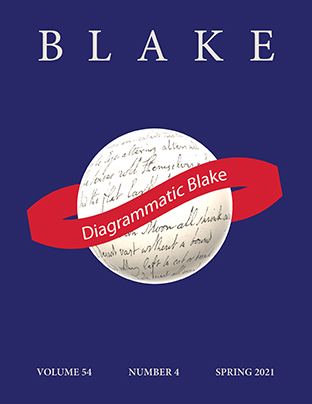Diagrammatic Blake: Tracing the Critical Reception of “The Mental Traveller”
DOI:
https://doi.org/10.47761/biq.281Abstract
I am certainly not the first to point out the difficulty of interpreting “The Mental Traveller.” Although the earliest commentator, William Michael Rossetti (in Alexander Gilchrist’s 1863 Life of William Blake), confessed no immediate qualms about the challenges, numerous scholars from William Butler Yeats onwards have readily declared their perplexity and, on occasion, have even dismissed the poem as an object of interest altogether. For many scholars, however, an acknowledgement of the poem’s sheer opacity features chiefly as the precursor to a claim to have found a unifying meaning of some kind or other—a way of making it make sense, of pointing to something outside the poem as if to say, this is what Blake really meant. In an astonishingly large number of cases, that meaning is presented in the form of a diagram.




